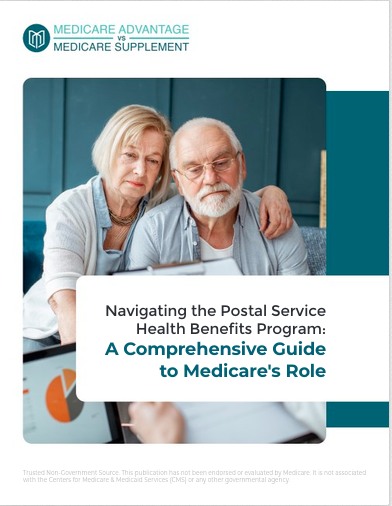Key Takeaways
-
Medigap plans help cover costs like deductibles and coinsurance that Original Medicare doesn’t pay for, making healthcare expenses more predictable.
-
If you want flexibility in choosing doctors and lower out-of-pocket costs, Medigap can be a worthwhile investment for more comprehensive coverage.
What Makes Medigap Different From Other Medicare Plans?
Medicare covers a lot, but it doesn’t cover everything. That’s where Medigap comes in. Unlike Medicare Advantage, which replaces Original Medicare with an all-in-one plan, Medigap works alongside your Medicare coverage to help reduce out-of-pocket costs.
How Medigap Works With Original Medicare
-
Covers expenses like copayments, coinsurance, and deductibles.
-
Lets you visit any doctor or hospital that accepts Medicare—no network restrictions.
-
Gives you more control over healthcare costs by reducing surprise bills.
-
Offers financial security by covering expenses that Medicare alone doesn’t handle.
-
Helps simplify healthcare planning by making costs more predictable.
If you want to keep Original Medicare but want better financial protection, Medigap could be the right solution.
The Key Benefits That Make Medigap Worth It
1. Fewer Out-of-Pocket Expenses
One of the biggest reasons people choose Medigap is to avoid the unpredictable costs that come with Medicare alone. Original Medicare leaves you responsible for certain expenses, including:
-
Part A deductible: Hospital stays come with a deductible that resets each benefit period.
-
Part B coinsurance: Typically, you pay 20% of covered outpatient services, which can add up fast.
-
Extended hospital stays: Medicare covers up to 90 days in the hospital, but after that, you’re responsible for more costs.
-
Skilled nursing facility care: After 20 days, you must start covering some of the costs.
-
Excess charges from doctors: Some healthcare providers charge above the Medicare-approved amount, and you may be responsible for these extra costs.
With Medigap, many of these costs are either reduced or eliminated, depending on the plan you choose.
2. Nationwide Coverage With No Network Restrictions
Unlike Medicare Advantage plans, which often require you to use specific networks, Medigap lets you visit any doctor or hospital in the U.S. that accepts Medicare. This is especially valuable if you:
-
Travel frequently or live in multiple states throughout the year.
-
Want the freedom to see specialists without referrals.
-
Prefer not to deal with network limitations or out-of-network costs.
-
Want access to top medical centers across the country without worrying about restrictions.
3. Predictable Healthcare Costs
Healthcare costs can be difficult to plan for, but Medigap gives you more control. Instead of worrying about coinsurance and unexpected medical bills, you pay a predictable monthly premium, helping you budget for healthcare expenses more effectively.
-
Helps avoid surprise medical bills.
-
Provides peace of mind with set monthly costs.
-
Reduces financial stress by offering stable out-of-pocket expenses.
4. Coverage for Emergency Care While Traveling Abroad
If you travel outside the U.S., Original Medicare generally won’t cover your healthcare costs. Some Medigap plans offer emergency medical coverage abroad, paying a percentage of covered expenses up to a lifetime limit. This can be a lifesaver if you need medical care in another country.
-
Covers emergency medical care in foreign countries up to plan limits.
-
Helps avoid massive out-of-pocket expenses while traveling.
-
Provides extra security for frequent travelers.
5. Guaranteed Renewability for Life
Once you enroll in a Medigap plan, it’s yours for life as long as you continue to pay your premiums. This means your coverage can’t be canceled due to age or health conditions, giving you long-term financial security.
-
Ensures you won’t lose coverage due to health status changes.
-
Allows you to keep your plan indefinitely, providing stability.
-
Protects you from future medical underwriting restrictions.
Important Considerations Before Choosing Medigap
Enrollment Timing Matters
The best time to enroll in Medigap is during your Medigap Open Enrollment Period, which lasts for six months starting the month you turn 65 and enroll in Medicare Part B. During this time:
-
You have guaranteed issue rights, meaning you can buy any plan available in your area without worrying about being denied or charged more due to health conditions.
-
After this period, you may face medical underwriting, meaning insurers can charge higher premiums or deny coverage based on your health history.
-
If you delay, you might not qualify for the same benefits later on.
-
Some states have special enrollment protections, so check your options before making a decision.
Medigap Doesn’t Include Prescription Drug Coverage
Medigap plans do not cover prescription drugs, so if you need medication coverage, you’ll need a separate Medicare Part D plan. Make sure to enroll in a Part D plan during your Initial Enrollment Period to avoid late penalties.
-
Medigap plans are designed for medical expenses, not prescriptions.
-
You must enroll in a Part D plan separately for medication coverage.
-
Missing your enrollment window can lead to late penalties.
Monthly Premiums and Potential Trade-Offs
While Medigap reduces out-of-pocket costs, you will have to pay a monthly premium for the coverage. The cost varies based on factors like:
-
The plan type you choose.
-
Your age at the time of enrollment.
-
Your location (some states have different pricing models).
-
Your health history if you enroll outside your open enrollment window.
Consider whether the added monthly cost is worth the financial protection Medigap provides.
Not All Plans Offer the Same Benefits
There are different Medigap plans, each offering varying levels of coverage. Some plans cover nearly all out-of-pocket costs, while others only cover a portion. Carefully compare plans to find one that fits your healthcare needs and budget.
-
Some plans offer robust coverage, while others have limited benefits.
-
Your financial situation will determine the best plan for you.
-
Research the available plans to find the right balance of cost and coverage.
How Medigap Stacks Up Against Medicare Advantage
Medigap and Medicare Advantage serve different purposes, and it’s essential to understand their key differences before choosing.
| Feature | Medigap | Medicare Advantage |
|---|---|---|
| Works with Original Medicare | Yes | No (Replaces it) |
| Network Restrictions | None – Any Medicare provider | Usually limited to networks |
| Out-of-Pocket Costs | Lower, but requires a premium | May have lower premiums but higher cost-sharing |
| Includes Drug Coverage | No | Often includes Part D |
| Coverage for Foreign Travel | Some plans include this | Generally not covered |
| Referral Requirements | No referrals needed | May require referrals for specialists |
If you value provider freedom and lower out-of-pocket costs, Medigap may be the better choice. However, if you prefer an all-in-one plan with built-in drug coverage, a Medicare Advantage plan might be a better fit.
What to Do Next
Deciding whether Medigap is right for you depends on your healthcare needs, budget, and long-term plans. If you’re looking for financial predictability, broad provider access, and fewer out-of-pocket expenses, it can be a valuable addition to your Medicare coverage.
If you need help choosing the right plan or want to compare your options, get in touch with a licensed agent listed on this website for professional advice.









